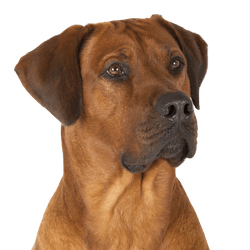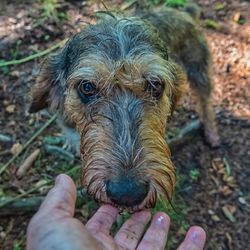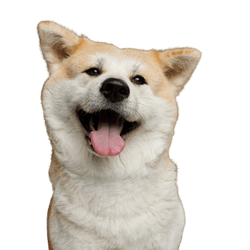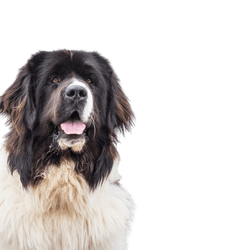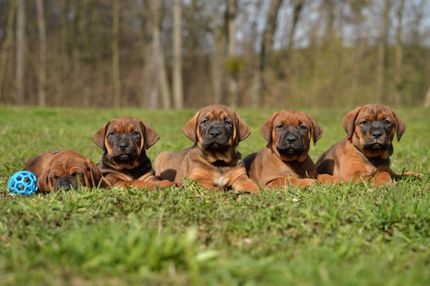
Greyhound Breed description: Character & Co
Greyhound
Facts & Origin
A Greyhound is the perfect companion for particularly sporty people. After all, these beautiful animals are the fastest dogs in the world! In the USA they are still used professionally in racing and are the name sponsor of the largest bus line in the country.
The origin of the Greyhound
Although the breed of today officially comes from Great Britain, the ancestors of these noble animals probably originate in the Near East. Homer already mentioned the Greyhound in his "Odyssey" about 3000 years ago.
Through trade, as a companion of conquerors and discoverers, the Greyhounds spread northwards. The Greyhound finally came to the British Isles with the migration of the Celts.
The first records date back to the 10th century after Christ, when the Greyhound was kept at the court of kings and nobles as a noble hunting dog. In the 16th century, racing became increasingly popular. Until modern times the Greyhound became a sad mass object with senseless reproduction, overbreeding and quick disposal in case of unfitness. This problem unfortunately still influences the once so worthy dogs until today.
Meanwhile the serious Greyhound breeding tries to establish these great animals as sporty family dogs and leisure companions. At the FCI the Greyhound is listed as an independent breed under the Standard No. 158, Group 10: Greyhounds and Section 3: Short-haired Greyhounds.
The breed characteristics of the Greyhound
If you have never seen a Greyhound before, you would usually assume that these dogs are grey. Therefore they are often confused with the grey shaggy Scottish Deerhound.
The Greyhound appears in all kind of different colours. The name rather goes back to the Latin word "granus" for fast or "greg" for dog or companion. All independently hunting dog breeds are called "Hound" in the English linguistic usage.
Until today the Greyhound is considered as prototype of all sight and racing dogs. Their name is associated with speed. What is often neglected is the great sensitivity of these animals. A Greyhound is a friend for life, if humans treat them with the same sensitivity.
- noble greyhound
- Ancestors probably come from the Near East
- faithful companion
- sensitive family dog (Attention - not a comfortable dog, a lot of exercise necessary. So only for very sporty families as a dog suitable)




| Alternate Name | English Greyhound |
| Origin | UK |
| Life expectancy | 10 - 14 years |
| Care requirements | low-maintenance |
| Activity level | high |
| FCI group | Short-haired Sighthounds |
| AKC group | Hound Group |
| KC group | Hound Group |
Greyhound mixes
Attitude, character and temperament of the breed
The typical character traits of the Greyhound
The Greyhound is a sensitive and affectionate creature. They want to please their owner and live closely with them.
Often they were the only dogs at court that were not kept in a kennel but were allowed in the rooms of the nobility.
If you are sporty and have a lot of time, a dog like this could be just right for you. You must be able to devote yourself to them and provide them with sufficient exercise. If constantly kept on the leash the Greyhound gets angry and depressed. Maybe you even organise hobby dog races. The fastest Greyhounds run up to 75 km/h. If you are training for the next marathon or cycling for hours, this dog is also perfect for you.
It belongs to the most intelligent and obedient dogs. Train them with patience and gentleness and you will get the most docile and attentive dog! This dog is also suitable for very active families. A well-balanced Greyhound also treats smaller children in a very gentle way.
- very affectionate and sensitive
- only suitable for sporty people
- needs sensitive training and guidance
- also suitable for active families with children
Character
Usage
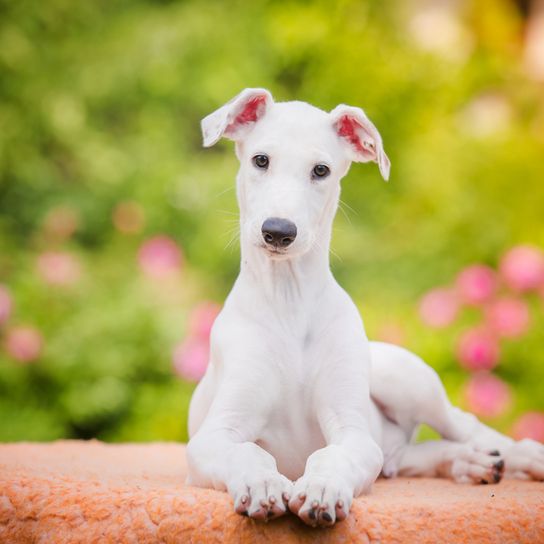

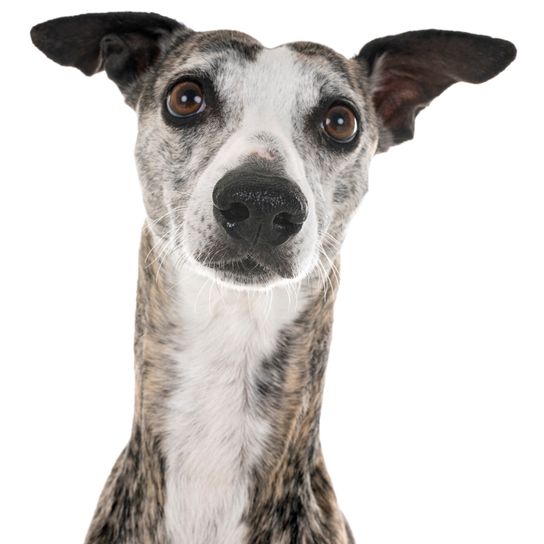


Health and breeding information
Breed typical diseases of the Greyhound
The Greyhound tends to overheat in summer. It is best to find a well-balanced exercise routine and not have them accumulate too much energy. If you let them run in the midday heat after a long wait, they might already be upset which makes them more vulnerable for suffering a heat stroke.
Like many other sighthounds, the Greyhound has a completely different organism and metabolism. Blood and oxygen values are considerably different from those of other dog breeds. With a Greyhound, you should always consult a specialist veterinarian who is familiar with the breed.
Acquisition, breeding and keeping of the Greyhound
You can buy a Greyhound puppy for about 800 Euros or more. Look out for a good breeder, who breeds these sensitive dogs with love and understanding. You can find good Greyhound breeders at the German Greyhound Breeding and Racing Association.
Instead of buying a Greyhound, you could also adopt one. Finding a lovable Greyhound at the animal protection is very easy. Former racing dogs can be found at the Greyhound Help on the Internet.


Look and coat of the Greyhound
A Greyhound is supported by long slender legs. The paws are relatively small and very stable. The physique is well-trained and muscular.
Their narrow and graceful head features quite large ears, which they lie flat when they are racing. The Greyhound is elegantly shaped, with a curved body and a long strong tail.
The fur of the animals is very thin and does not keep them very warm. In winter, older animals can also freeze if they have to stand still for a long time. This dog prefers to be on the move or lying in its basket.
Almost all colours can be found. There is also pied and brindle. Especially beautiful are the blue breeding lines.
- graceful but strong build
- slim head and muscular trunk
- nearly all colours
- Coat is thin and sensitive
Size, weight and life expectancy of the Greyhound
Despite the delicate appearance, larger males can reach up to 40 kg. After all, they also grow to a withers height of up to 75 cm. With good care this dog can reach a very high age.
- Height at withers male 71 to 75 cm
- Height at withers female 68 to 71 cm
- Weight male 27 to 40 kg
- Weight female 26 to 35 kg
- Life expectancy up to 14 years and more
| Fur length | short |
| Fur | flat coated |
| Ear shape | Tilt-ear |
| Tail | lang |
| Anatomy | slim, sporty |
| Size ♀ | 68 - 71 cm |
| Weight ♀ | 26 - 34 kg |
| Size ♂ | 71 - 76 cm |
| Weight ♂ | 27 - 40 kg |
| Suitable For | - |
Colors

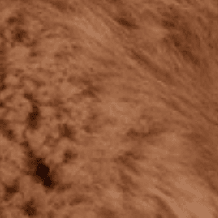








Other large dogs
Useful Articles
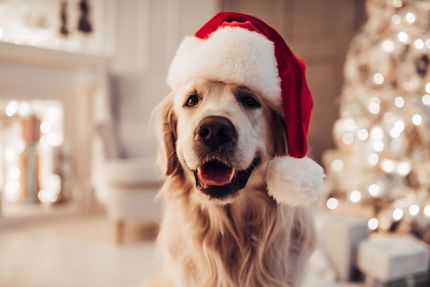
You can find articles that might interest you in the dogbible blog to match your favorite breed.
Visit our magazineto stay up to date on dog trends.
To find out more, view our Privacy Policy
Find here the breed that suits you and find out what character traits it has. Here you can also learn more about the origin, size and weight of your favorite breeds.
Matching your favorite breed, you'll find articles that might interest you on the dogbible dog blog.
Dog is not yet house trained, what should I do?
5 tips to master dog encounters without problems and aggression


